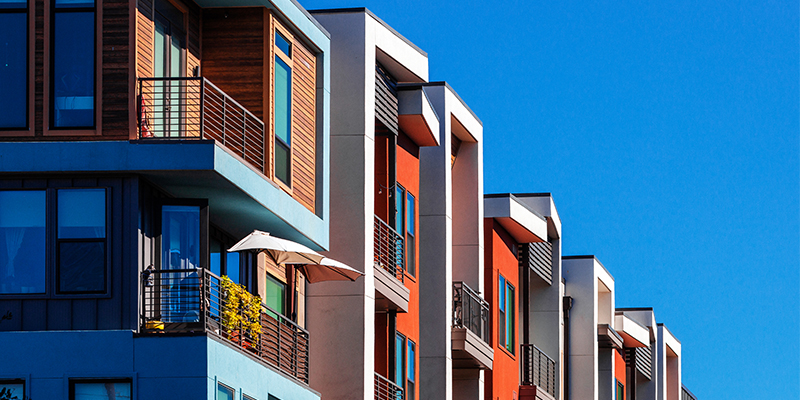In the Spring issue of Development magazine, I shared some of my thoughts on our industry, my goals as chair, and what I see as NAIOP’s greatest member value. I had so much to share that I quickly ran out of room! So, I’m sharing an extended cut of our conversation with our Market Share blog readers. If you already haven’t, I’d invite you to read my recent column in the Spring issue of the magazine.
What are your goals as NAIOP Chair?
Our association is growing – surpassing new records at the end of 2022 – yet the membership structure is complex and can be challenging to explain to a new member. We need to simplify and streamline, making the structure easier to understand and removing any potential barriers for members. I’m pleased to share that a task force has been appointed to examine the structure.
The industry remains behind the curve of diversity, equity, inclusion and belonging (DEI&B). As we develop the next strategic plan, I believe we need to establish meaningful and actionable tenets, supported by the executive committee and propelled by our board. This commitment needs to be supported with a budget for further recruitment, development and education for all members on the merits of a diverse workforce so that our association can demonstrate its commitment to all underrepresented individuals in commercial real estate.
For decades, NAIOP Corporate – uniting 52 chapters across the U.S. and Canada – has successfully represented the members on federal policy issues; however, we need to work with our chapters to align our priorities on common issues and problems facing regions, states and provinces. This year, we’ll survey members to identify key issues to create a more focused approach to advocacy on all levels.
Why is diversity so important to business?
Our industry has been slow on its path to diversity and inclusion, but I have great optimism about what we can achieve with focus and commitment. It needs to be second nature to think, behave, hire and develop the broadest spectrum of talent for the future of commercial real estate. That’s how we keep our association and our industry successful in the modern era.
Almost 17 years ago, NAIOP introduced its Developing Leaders program for younger professionals. Today they comprise more than a quarter of all members. They already represent the association well, and they will help keep NAIOP strong and essential as the industry evolves through economic cycles and generational change.
Why should our members be engaged legislatively?
Relationships matter. If elected officials and regulators don’t know who our members are, what they do and how we contribute to communities and the overall economic health of the U.S., they may feel freer to enact laws and regulations that make it harder for us to operate. It is important to stay engaged and aware of the legislative and regulatory environment – both locally and nationally. That will help us make better decisions and, more importantly, convey our pride for this great industry and all that it does.
Members are part of both a local chapter and the overarching organization. Why is this valuable and how can the two affiliations complement one another?
Real estate is a local business. Chapters can best adapt their programming to meet the needs of local members. The overarching organization can provide national and regional level insights, broad educational opportunities, networking across local chapters and advocacy and issue spotting on legislative matters affecting the broader membership. It’s a symbiotic relationship of collaborating, educating, and advocating if properly executed. That should be our goal.
What do you see for 2023 as we emerge from three years of pandemic living?
We will face challenges in 2023 as we grapple with escalating interest rates, stubborn inflation and dimming confidence in the overall economy. But there are also reasons to be optimistic. Savvy commercial real estate developers learn to predict and assess these external factors and overcome obstacles in the path of our success. A downturn can present opportunities for capital investment, creative problem-solving and recruiting new talent.
What can NAIOP do to prepare its members for a period of uncertainty/economic stresses?
NAIOP has always helped its members navigate choppy waters with continuing education, new areas of learning, and a collaborative membership that is willing to help others by sharing our experiences. NAIOP can help its members find new opportunities, partners and ways to make real estate projects more financeable and successful. The reports by the Research Foundation are a key example of this type of benefit. The association has a lot to offer during uncertain times and we should all take advantage of its offerings.
What do you find engaging about the CRE industry?
Whether in office, retail, hospitality or logistics, developers need tenants. I love getting to know customers – their business and their needs – and then help solve their problems so they can flourish. This makes me excited to go to work every day. The pivotal role our industry plays in making local communities and economies stronger also is incredibly satisfying. Our real estate investments and career opportunities are much bigger than one development project – we’re helping create a strong economy and better communities for people to work and live.
How has the Southern California/Western Region market grown and changed?
I have lived in SoCal for nearly 35 years in Arizona for a decade before that, and I have worked all over Europe, Mexico, Canada and Brazil during the last few decades. But SoCal is my home and where I am most rooted with family, friends and colleagues. In the time I have lived and worked here, Southern California has really changed in terms of population growth and economic significance. Our economy has substantially diversified. It continues to be a vibrant place for entrepreneurs and offers a diverse culture that is open to newcomers.
What’s next for industrial development?
Industrial was the darling product type for the last 5-6 years and still has gas in its tank, in my view. As consumers have moved to a more omnichannel buying behavior, logistics real estate will continue to bloom for years to come as the percentage of online retail sales grows. That shift in consumer spending behavior is creating a growing need for industrial space closer to areas of major population. As a result, we’re seeing the need for more community engagement in the development of industrial, which presents an opportunity to help local leaders and members of the community better understand the value industrial developments bring to their community.
Sustainable logistics is an area that I expect to explode. As companies develop industrial projects, making sure they are being designed, constructed and operated in a sustainable manner will be key to winning and maintaining community support. Fully featured 40-foot clear, LEED certified warehouses are as popular today as they have ever been, making them a solid investment opportunity. That said, the smart investor is investing in properties that are built with an eye toward the future (solar, LED, EV, etc.).
Fleet electrification, while in its infancy, is having a huge impact on the industry. As landlords and tenants strive to achieve net zero goals, the emergence of electric vehicles of all kinds will be a part of that solution.








